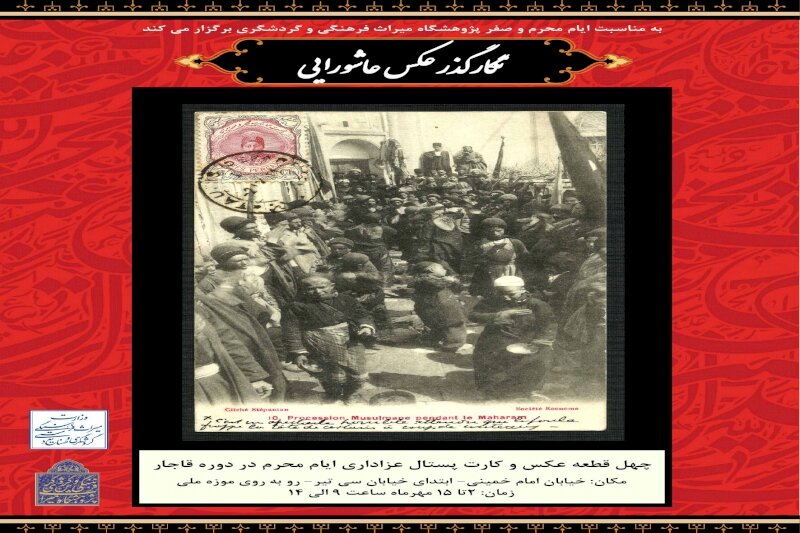Photo exhibit puts spotlight on Muharram rituals in Qajar-era Iran

TEHRAN – A public exhibition, featuring photographs and postcards printed during the Qajar era (1789–1925) in Iran, opened its doors to the public in downtown Tehran on Wednesday.
The works show scenes how Iranians people of the 19th century commemorated the month of Muharram, and the epic passion and courage of Imam Hussein (AS), the third Shia Imam, and his 72 loyal companions, who were all martyred in the Battle of Karbala in 680 CE.
[A selection of] 40 photographs and postcards, depicting people observing Muharram rituals, such as tazieh, and eulogy sessions for Imam Hussein (AS) are on show during the event, which will be running through October 6 at a gallery situated on the historical Si-e Tir St., opposite the entrance to the National Museum of Iran, cultural heritage official Alireza Naseri said on Monday.
During the Qajar era, Tekyeh Dowlat, a royal theater in downtown Tehran, served as one of the main centers for the mourning ceremonies in Muharram. Being completed in 1868 by the order of Naser al-Din Shah Qajar, Tekyeh Dowlat, literally meaning “State Theater”, was one of the most famous of all the tazieh performance spaces in the country. It has a capacity for more than 4,000 people.
During Muharram, apart from mosques, each neighborhood sets up its own establishment for the ceremonial processions of the month known as Tekyeh (or Tekkiyeh), which are venues for the gathering of mourners known as ‘heyat’ (literally meaning group or delegation) who honor the life of Imam Hussein (AS).
Tekkiyeh (stemming from the word eteka, meaning backup or reliable) was historically a staying place for visiting pilgrims and dervishes who relied on the goodness of the benefactors for daily sustenance. Today Tekkiyehs, however, are specific locations for mourners who meet and participate in religious gathering after which they head out on the streets in groups known as dasteh (literally meaning cluster) to parade dramatic mourning.
Muharram and the following month, Safar (which includes commemoration of the aftermath of Karabala) are a period lamentation for Muslims. War and fighting are prohibited during Muharram and festivities like weddings and birthdays are usually postponed to more appropriate days. People generally wear black in a sign of respect or at least avoid wearing very bright colors.
AFM/MG
Leave a Comment